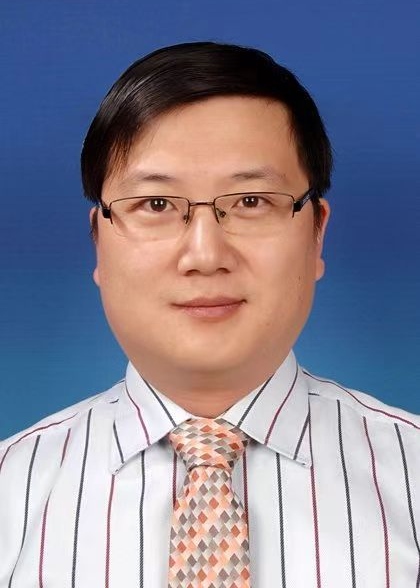IntroductionXiaoming Sun, Professor and Ph.D. Advisor. He has published over 300 papers as corresponding author in leading international journals such as Nature, Nature Catalysis, Joule, Chem, Nature Communications, JACS, Angewandte Chemie, and Advanced Materials, with more than 36,000 citations. He has authored one monograph, filed 13 international patent applications (2 granted), and holds over 70 Chinese invention patents, 16 of which have been commercialized. He currently leads multiple national research projects, including NSFC Key Programs and National Key R&D Programs. He received the NSFC Distinguished Young Scholars Award in 2011 and was selected as a Leading Talent in the “Ten Thousand Talents Program” in 2019. In 2014-2018, he is ranked as a highly cited scholar in the field of materials science by Elsevier Publishing House. In 2015-2017, he is selected as top 1% of China's highly cited scholar by the Royal Society of Chemistry. In 2018, he is ranked as a highly cited scholar by web of science. EducationWork ExperienceSocial PositionSocial ActivitiesResearchMainly engaged in the field of: controllable synthesis of inorganic nanomaterials, and their applications in energy chemistry, especially water electrolysis, fuel cells, and battery:
TeachingPostgraduatesFunding
Vertical ProjectHorizontal ProjectPublications1. 10,000-h-stable intermittent alkaline seawater electrolysis. Nature 639, 360–367 (2025). 2. Fluoride-Engineered Electrolyte for Highly Stable and Efficient Alkaline Seawater Electrolysis at 2 A cm−2.Angew. Chem. Int. Ed. 2025, e18106. 3. Lattice Oxygen Mechanism Induced on Nickel Sites by Cl– Adsorption for Efficient Seawater Oxidation Reaction.J. Am. Chem. Soc.2025, 147 (24), 20716–20724. 4. Macroscopic bubble generation promoted by nanobubble seeds as a traceless anti-fluctuation strategy for water splitting. Nat Commun 16, 5732 (2025). 5. Self-protecting CoFeAl-layered double hydroxides enable stable and efficient brine oxidation at 2 A cm−2. Nat Commun 15, 4712 (2024). 6. Inhibiting Dissolution of Active Sites in 80 °C Alkaline Water Electrolysis by Oxyanion Engineering. Angew. Chem. Int. Ed. 2024, 63, e202406082. 7. Co(CN)3 catalysts with well-defined coordination structure for the oxygen reduction reaction, Nat. Catal., 2023, 6, 1164-1173 8. Eliminating over-oxidation of ruthenium oxides by niobium for highly stable electrocatalytic oxygen evolution in acidic media, Joule, 2023, 7, 558-573 9. Atomically precise electrocatalysts for oxygen reduction reaction, Chem, 2023, 9, 280-342 10. Self-flooding behaviors on the fuel cell catalyst surface: an in situ mechanism investigation, Energy Environ. Sci., 2023, 16, 491-501 11. Dual Functional Titanium Hydride Particles for Anti-Ultraviolet and Anti-Oxidant Applications, Adv. Funct. Mater., 2023, 33, 2209422 12. Regulating Electronic Structure of Fe-N4 Single Atomic Catalyst via Neighboring Sulfur Doping for High Performance Lithium-Sulfur Batteries, Adv. Funct. Mater., 2023, 33, 2210509 13. Stable zinc anode with ionic conductive interface layer for high performance aqueous zinc-ion batteries, Chem. Eng. J., 2023, 474, 145981 14. Single atomic ruthenium in WO3 boosted hydrogen evolution stability at Ampere-level current density in whole pH range, Chem. Eng. J., 2023, 458, 141414 15. Phosphate-decorated Ni3Fe-LDHs@CoPx nanoarray for near-neutral seawater splitting, Chem. Eng. J., 2023, 460, 141413 16. Synergistic Effects in N,O-Comodified Carbon Nanotubes Boost Highly Selective Electrochemical Oxygen Reduction to H2O2, Adv. Sci., 2023, 9, 2201421 17. Phosphorus induced activity -enhancement of Fe -N -C catalysts for high temperature polymer electrolyte membrane fuel cells, Nano Res., 2023, 16, 6531-6536 18. Micropore-confined Ru nanoclusters catalyst for efficient pH-universal hydrogen evolution reaction, Nano Res., 2023, 16, 2068-2079 19. Loading IrOx Clusters on MnO2 Boosts Acidic Water Oxidation via Metal-Support Interaction, ACS Appl. Mater. Interfaces, 2023, 15, 47103-47110 20. Single atomic Ru in TiO2 boost efficient electrocatalytic water oxidation to hydrogen peroxide, Sci. Bull., 2023, 68, 613-621 21. Ru-doped WO3 enabling efficient hydrogen oxidation reaction in alkaline media, Nanoscale, 2023, 15, 12064-12070 22. High throughput screening of single atomic catalysts with optimized local structures for the electrochemical oxygen reduction by machine learning, J. Energy Chem., 2023, 81, 349-357 23. First-principles study of oxygen evolution on Co3O4 with short-range ordered Ir doping, Mol. Catal., 2023, 535, 112852 24. CO2 reduction performance of Cu/Er supported on N-doped graphene: A first principles study, Mol. Catal., 2023, 547, 113335 25. Bio-Derived Wood-Based Gas Diffusion Electrode for High-Performance Aluminum-Air Batteries: Insights into Pore Structure, Adv. Mater. Interfaces, 2023, 2300355 26. A highly-stable bifunctional NiCo2S4 nanoarray@carbon paper electrode for aqueous polysulfide/iodide redox flow battery, J. Power Sources, 2023, 561, 232607 27. 3D porous and Li-rich Sn-Li alloy scaffold with mixed ionic-electronic conductivity for dendrite-free lithium metal anodes, J. Alloy. Compd., 2023, 947, 169362 28. Highly efficient paired H2O2 production through 2e− water oxidation coupled with 2e− oxygen reduction, Chem Catal., 2023, 3, 100672 29. Unlocking Layered Double Hydroxide as a High-Performance Cathode Material for Aqueous Zinc-Ion Batteries, Adv. Mater., 2023, 34, 2204320 30. Ferricyanide Armed Anodes Enable Stable Water Oxidation in Saturated Saline Water at 2 A/cm2, Angew. Chem.-Int. Edit., 2023, 62, e202309882 31. Nitrite Electroreduction to Ammonia Promoted by Molecular Carbon Dioxide with Near-unity Faradaic Efficiency, Angew. Chem.-Int. Edit., 2023, 62, e202213711 32. Bubble pump consumption chronoamperometry for evaluating gas diffusion electrodes, Chem Catal., 2023, 3, 100769 33. Interfacial nanobubbles' growth at the initial stage of electrocatalytic hydrogen evolution, Energy Environ. Sci., 2023, 16, 2068-2079 Awards
PatentHonor RewardAdmissions Information |

